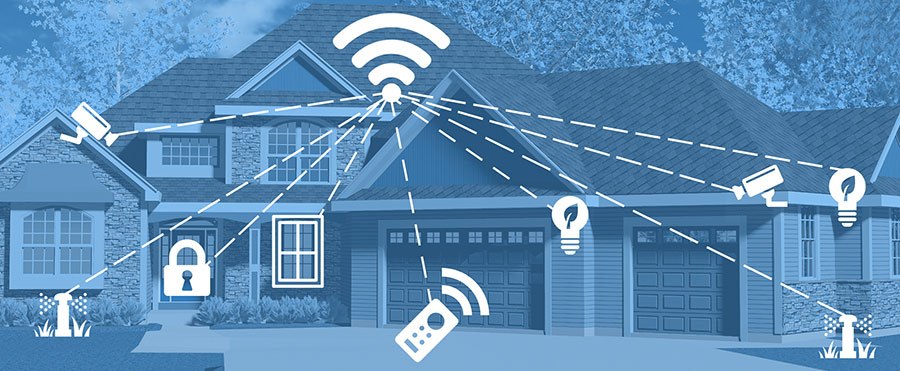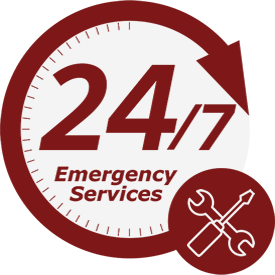We live in amazing times. And by amazing, I mean the awe-inspiring, unbelievable kind of amazing.
Considering that you’re probably reading this article on a mobile device — which was accessed digitally via a complex search algorithm — by a phone that has the same computing power as most laptops — and which also connects you wirelessly to the entire bank of human knowledge — the word “amazing” might even be an understatement!
Smart Homes Began With Smart Gadgets
Without the advent of a few key pieces of technology aimed at making life easier and more convenient, the wide adoption of smart home tech may have been delayed for years. One of the first “smart” gadgets was the Roomba, an “autonomous robotic vacuum cleaner”, which hit the market way back in 2002. The first generation had a few sensors that enabled it to detect dirty spots on the floor, would help it change direction when it ran into an obstacle, and perform a few other cool navigational maneuvers. With the inclusion of cameras and GPS-enabled onboard mapping & navigation software, the Roomba has evolved into a much smarter tool. The technology has even spawned cousins, like a line of wireless robotic lawn mowers!
Smart Gadgets Evolved Into Smart E-Systems
Although some less gadgety tech, like thermostats that could be programmed via the keypad, motion & light sensitive outdoor lighting, and advanced alarm systems were quickly adopted as they hit the market, they were all missing a key feature: connectivity. It was fairly straightforward to connect interior systems to a network, like a phone line or a router. However, it was costly and time consuming to connect exterior gadgets (like security cameras, sprinklers, detached lighting) to a home communications network. But once WiFi began popping up in homes and smartphones took over the market, it provided a natural path for every gadget & gizmo to link up wirelessly and be controlled and automated via their own app.
One goal in most smart home designs is to streamline and simplify wherever you can. New houses built from the ground up are opting to eliminate running phone lines and coaxial cables throughout the walls and attic. Instead, the home will mainly rely on a central WiFi network system, and supplemented with strategically placed WiFi repeaters to maximize coverage. This allows large & lightweight wall-mounted flat-screen digital displays, voice-controlled media interfaces, and control pads to be placed virtually anywhere within the zone.
As Tech Got Connected, Homes Got Smarter
Today’s smart homes are much more sophisticated than even just a few years ago. The cool gizmos gave way to more holistic solutions as consumers realized that there were significant savings to be had with automating climate control systems, and increased peace-of-mind in having a reliable, interactive security systems. Plus, the added convenience of having 24/7 access to all the system functions via an app gives the user a real sense of control.
Fortunately, most of the tech companies that manufacture the controlling smart home system provide an interface for a variety of individual components. This allows the parent system to expand with the needs of the homeowner, letting them grow from a “starter kit” of a smart-home hub and a few gadgets, into a more comprehensive intelligent network of devices. Being a fairly new industry, there is still quite a bit of homework to be done when scoping out a system…so always be diligent and ask the experts from Central Heating & Air for guidance!
One of the most “amazing” things about futuristic smart homes is that nearly everything electronic can be automated or manually controlled by a single remote control or a smartphone app. Maybe the best examples of entry-level smart automation devices are the Alexa Echo and the Google Home voice-activated devices. These smart systems allow anyone within shouting distance of the device to access information, music, weather, news, podcasts, shopping lists, and reminders. These devices also integrate with several other apps and smart systems that allow voice control and automation of smart home features.
The future of home ownership involves a variety of smart gadgets
smart home automation wireless automationIf you’re about to build a new home or remodel / renovate an existing home, you should spend some time considering what all you want to automate. Beyond the obvious components like security systems, outdoor lighting, and climate control systems, you also may want to expand the menu of controllable components.
Imagine everyone in the house waking up to their own morning music playlist as the window shades automatically draw open, the hall lights come on, and the coffee maker starts percolating. Pretty nice morning routine, right? And, as you’re leaving for the day, all the door locks are automagically locked, alarm is set, garage door pops open and the inside lights shut off.
Those are all pretty standard features right now, but if you think outside the box, there are a LOT of other integrations that could help increase convenience and efficiency. For example, ordering groceries can be (somewhat) automatic via smart refrigerators that track your usage and inventory of certain items! Or, when you’re away, you can get a text message and link to a live video feed when someone enters your house. Controlling the kids’ internet usage or TV channel access based on time of day or usage time may be useful too. Other cool features you may need include automated pet feeders, automated controls for your pool and spa, pumps for exterior water features, and sprinkler systems.
Nearly every aspect of a newly constructed house, renovated home, or remodeled room contains materials and components that would’ve been considered “futuristic” a decade ago.
Can you imagine the reaction of someone waking up from a 10-year coma to discover they could catch up on all the TV shows they missed by streaming HD video on a wireless touchscreen tablet while simultaneously video-chatting with friends via Facebook/FaceTime/Skype through an app-driven, full screen smartphone??? Literally none of that existed prior to our fictional friend falling into their fictional coma, so it would be quite entertaining to witness their amazement!
Beyond Amazement: Think Practically
When considering to either design a smart home from the ground up, or to convert your “dumb” house into a smart house, the best advice is to take a more practical approach. Beyond the awesome allure of futuristic gadgets lies the pragmatic realism of HOW and WHY all these intelligent features can make your home better.
Think about it like this; most smart devices are intended to improve efficiency, facilitate energy conservation, and enhance convenience. Therefore, your home should be constructed with the optimal materials so that the devices can have maximum effect. That’s why many of the building materials and structural elements used in these intelligent structures focus on enhancing efficiency and conserving energy. For example, the windows inside a smart home may now have a clear coating of metallic oxide to make them more energy-efficient. Elements like fiber cement siding, advanced types of insulation, and specialty paints are used to limit or retain heat loss.
One of the most fundamental components to a smart home is the climate control system. Simply by adding an intelligent thermostat can help homeowners save 12 to 15% on heating and cooling costs, plus adding an array of smart lights can slash costs even more. There are now even wireless light bulbs that allow you to control the intensity and color of the light!
Another very practical consideration for smart homes – especially for homes around Baton Rouge, Louisiana – is having an “intelligent” backup generator or standby generator. These natural gas powered generators automatically detect a power outage and deliver backup power to your home within seconds, then keep your power running – whether it’s for two hours or two weeks!
The Bottom Line When Considering Smart Home Automation
Building a smart home or upgrading the smartness of an existing house is a wise investment. If you never plan to sell, you’ll still save money over the long term, as well as increase your conveniences. If you do plan to sell one day, smart features are going to make your property more attractive to potential buyers, as well as provide a bump in your appraisal value. Even if you decide to start with a few basic smart functions, the payoff will most certainly be worth the initial investment.
Central Heating & Air has a team of trained Comfort Specialists that can guide you toward making the right decision on which home automation system to adopt. We have the equipment to help you enhance your environment with the right mix of temperature control, as well as reduce your utility bills and increase your energy savings. Just contact us anytime online or call (225) 262-1186 and we’ll set up a time for an on-site consultation!









